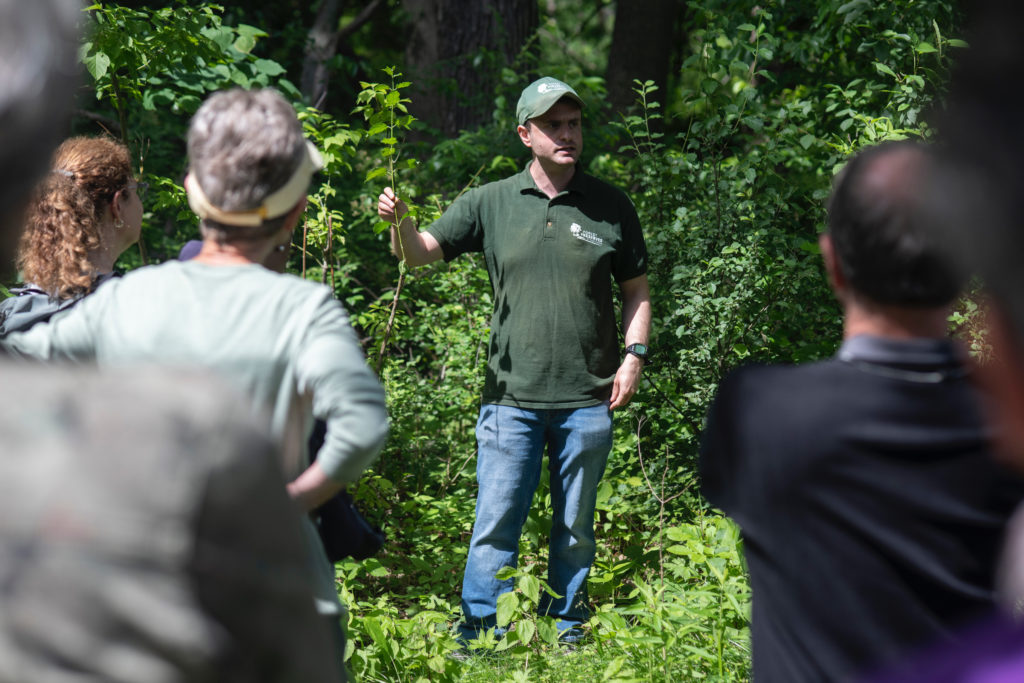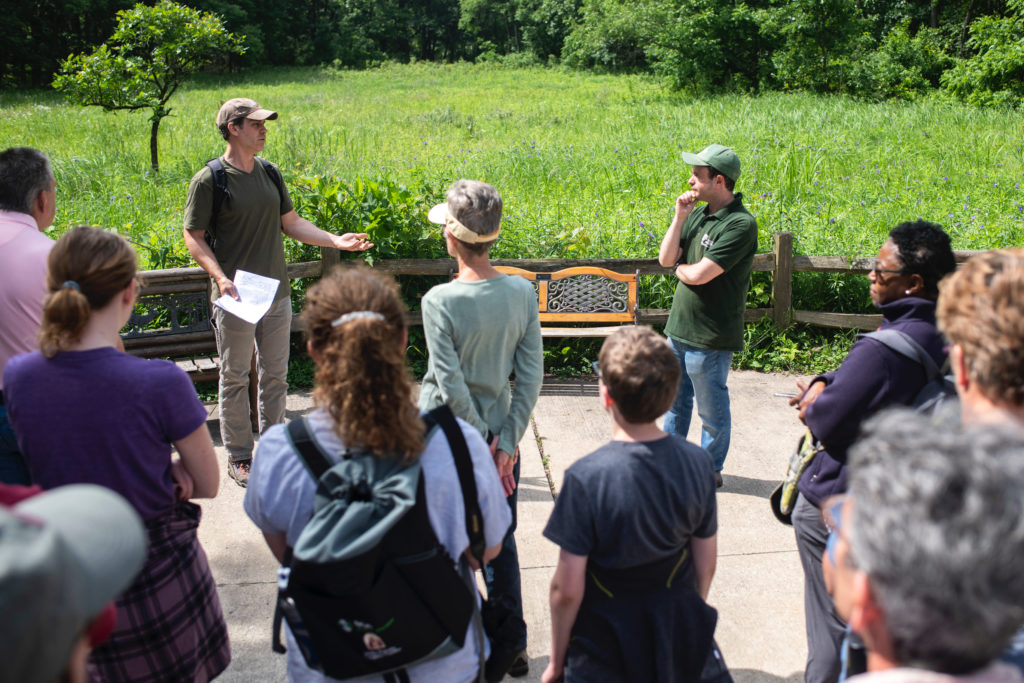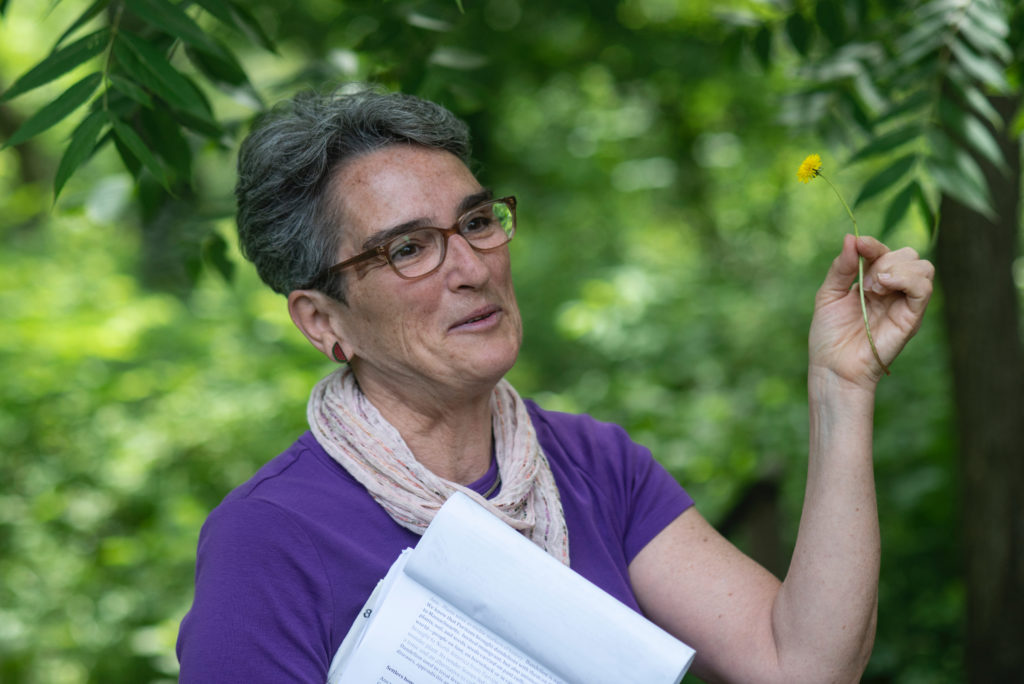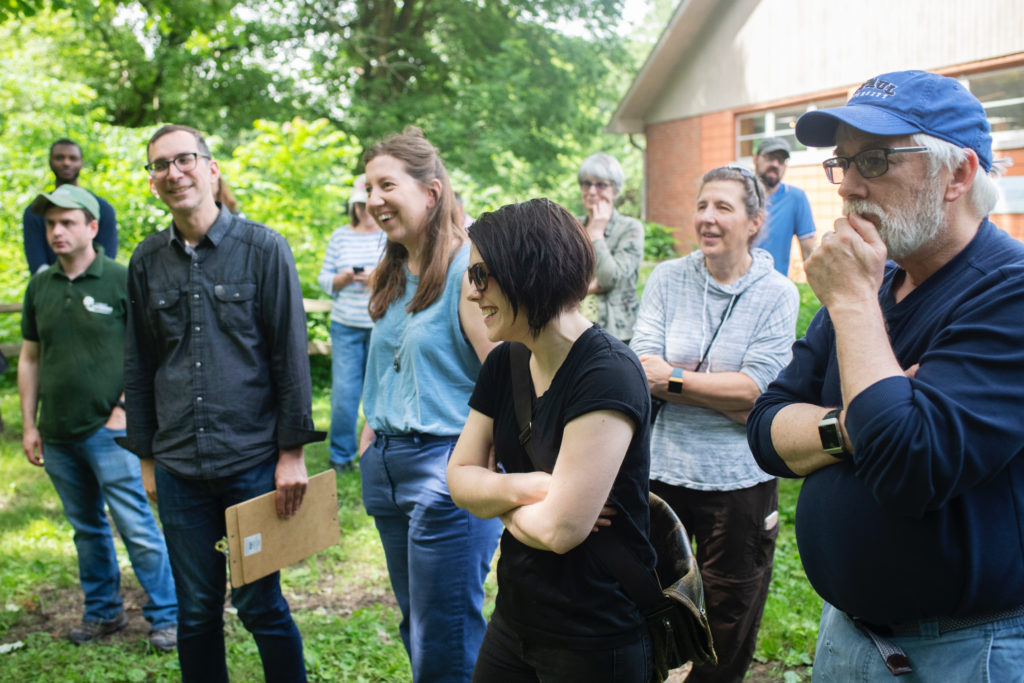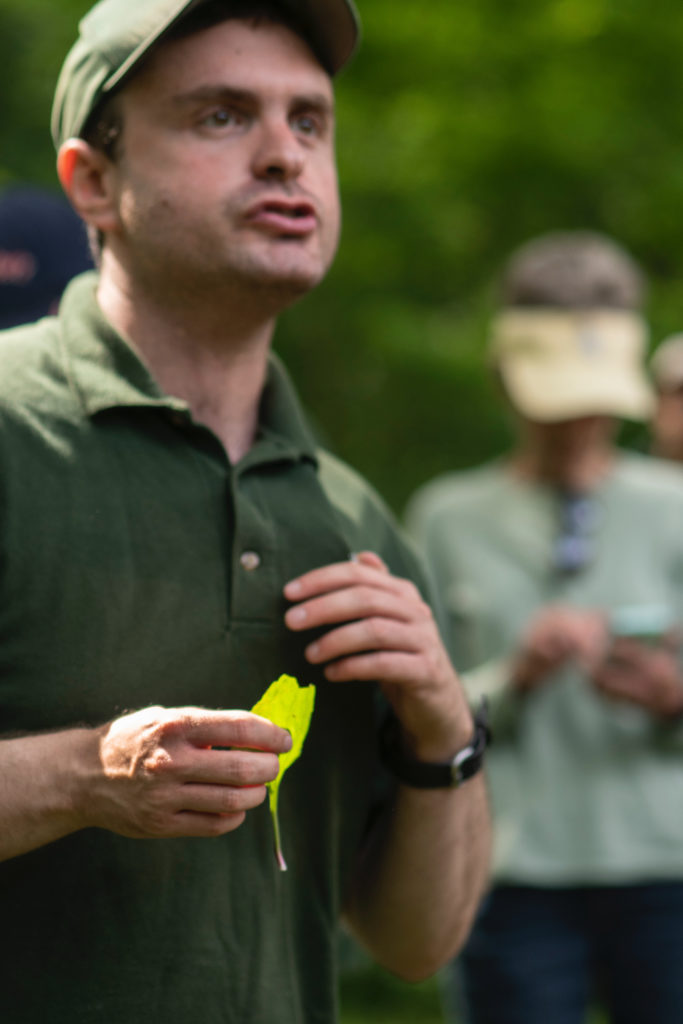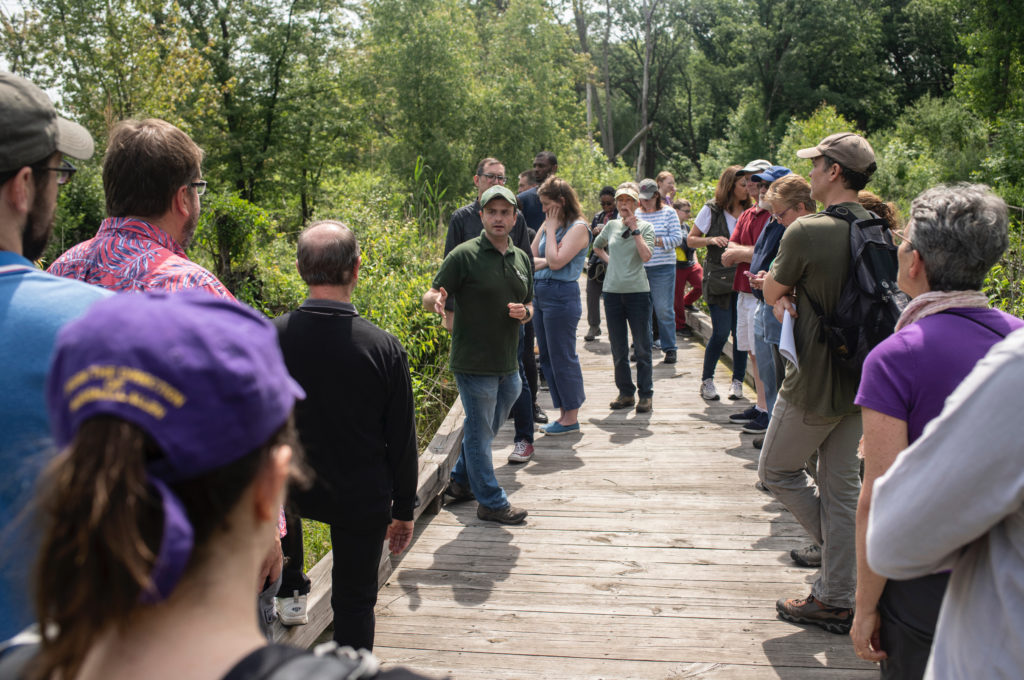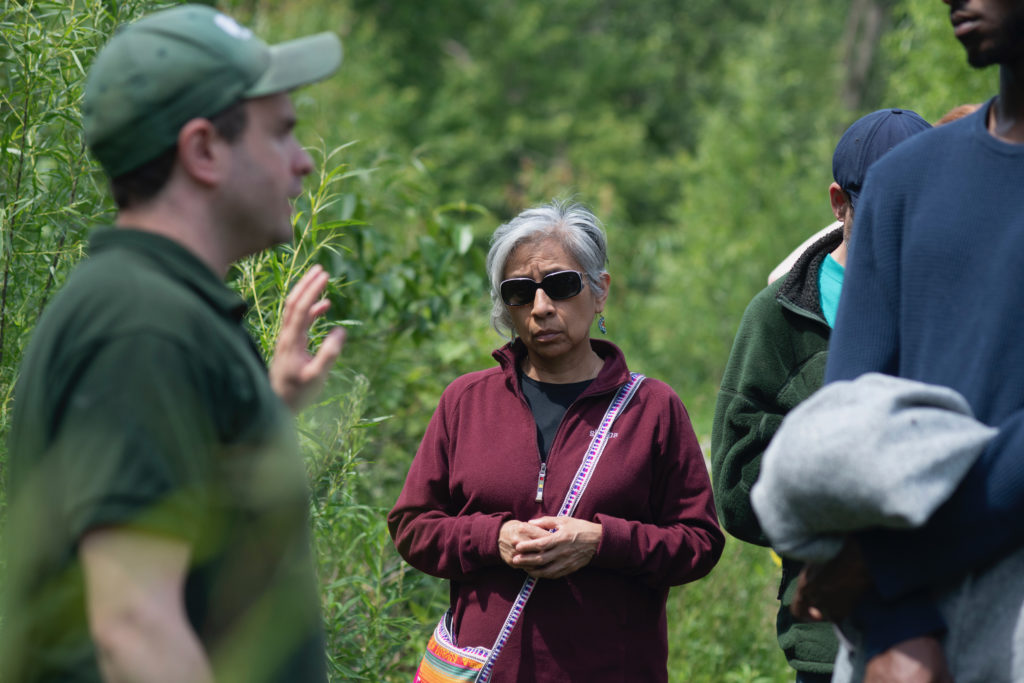Immigrant Landscape
How a new landscape replaced the prairie state in Illinois
About Immigrant Landscape

Illinois is arguably the most human place in North America. Humans have attempted to control the landscape for more than 10,000 years and in the process have created, together with Iowa, the largest human-lead change in a landscape in the history of North America, with less than .01 percent of the land meaningfully unaltered by humans.
It’s a history that is forgotten but not hidden. It is readily revealed by the story behind how some of the most common plants in the state, from dandelions to clover, arrived in the Midwest from Europe and Asia.
The Immigrant Landscape nature walks brought more than 100 people to the Forest Preserves of Cook County’s Sand Ridge Nature Center in South Holland, IL, to explore its trails and the environmental and economic history of the state revealed in common plants.
Gavin Van Horn of the Center for Humans and Nature moderated the discussion with historian Ann Durkin Keating and naturalist Alex Parker in June and July of 2019.
The impact of humans on the Illinois landscape can be traced back at least to Native Americans domestication and dispersal of native plants like milkweed to serve their needs and continued through the arrival of the first Europeans, who brought with them medicinal plants like dandelions. Keating and Parker helped guide participants through the economic forces driving different plant introductions and the biological characteristics that allowed different plants to thrive here.
The walks ended with discussions with participants about how they were changing the landscapes around their own communities by cultivating and removing plants and what it revealed about their own personal values and economic needs.
Through the program Illinois Humanities was able to collect and share the stories behind more than 40 plants common in Illinois and much of the United States. Among those were how buckthorn, now the most common tree in Illinois, was originally introduced in the 19th century as a hedging plant when lumber was expensive and difficult to acquire on the grassy prairies.
The walks helped to underscore that we as humans alter any landscape we live in and that our values and economic lives are revealed in the changes we bring to a place. These are critical questions as we struggle to understand climate change and how it changes our understanding of ourselves in relation to the natural world around us.
The program was designed and lead in 2019 by Sam Cholke, program manager for the Economy for Illinois Humanities.
The Guide
 Illinois Humanities created a special historical nature guide for participants of the walks that allowed them to go home and continue searching for plants that revealed stories about the history of the land in their area. That guide is now being made available to all and includes a selection of eight plants with a unique story that helps illustrate our previous relationships to plants in the Midwest and how their usefulness shaped our approach to the natural world around us.
Illinois Humanities created a special historical nature guide for participants of the walks that allowed them to go home and continue searching for plants that revealed stories about the history of the land in their area. That guide is now being made available to all and includes a selection of eight plants with a unique story that helps illustrate our previous relationships to plants in the Midwest and how their usefulness shaped our approach to the natural world around us.
The guide is double-sided and can be printed on 11-inch-by-17-inch paper in a standard printer. Once printed, it can be folded into quarters to create a small booklet or left unfolded to display the poster on the reverse side.
Watch a Walk
Video by Burlingham Productions
The nature walks extended over approximately a half-mile of trails at the Sand Ridge Nature Center and incorporated the settlers cabins, nature trails, picnic grounds, and more as active sites of inquiry and conversation. The walks made use exclusively of plants found growing naturally at the nature center to guide discussion.
About the presenters
Alex Palmer is a naturalist and certified interpretive guide with the Forest Preserves of Cook County at Sand Ridge Nature Center.
He has over 10 years of experience in the natural resource management and environmental education professions across the eastern United States, including within the Calumet Region along the south rim of Lake Michigan. A native of the Great Lakes, Alex spent his childhood within the Lake Erie watershed on the Allegheny Plateau in the eastern half of Cleveland, Ohio, where he developed a fascination for urban natural areas. He considers himself an “urban naturalist.”
Ann Durkin Keating is the Toenniges Professor of History at North Central College where she has taught since 1991.
She holds an undergraduate degree from the University of Illinois and her graduate degrees from University of Chicago. She was the co-editor of the Encyclopedia of Chicago (2004), a print and online project. She has also written several books including Building Chicago: Suburban Developers and the Creation of a Divided Metropolis (1988) about the emergence of suburban government in Chicago and Chicagoland: City and Suburbs of the Railroad Age (2005). More recently, she has turned to Chicago’s early history in Rising Up From Indian Country: The Battle of Fort Dearborn and the Birth of Chicago (2012). She has also just completed a manuscript on Juliette Kinzie and Chicago before the 1871 fire to be published next year by University of Chicago Press.
Gavin Van Horn is the director of cultures of conservation for the Center for Humans and Nature, a nonprofit organization that focuses on and promotes conservation ethics.
He is the author of The Way of Coyote: Shared Journeys in the Urban Wilds,” co-editor of City Creatures: Animal Encounters in the Chicago Wilderness and Wildness: Relations of People and Place,” and he writes for, edits, and curates the City Creatures blog. He lives in Evanston, IL.
What Participants Said
I continue to think about what you said about Illinois being uniquely bereft of undisturbed landscape relative to other states. I also appreciate how Gavin challenged us to question our language about plants and how we think about the landscape.
I’m not someone who uses the word “weeds.” But since I’ve gotten involved in ecological restoration work, I have found myself wanting to categorize plants as “good” or “bad,” depending on whether they’re native. Now when I see a plant that isn’t native, and maybe even invasive, I think about it in the broader context of human migration.
The main thematic takeaway from the program — that landscapes reflect our values — helps me sort out and articulate my feelings about my surroundings.
— Maureen
What’s stayed with me is the contrast in how the the native peoples and the immigrants thought about and used the land. The Potawatomi and other native peoples worked with the land while the immigrants wanted to claim it, own it, and make it more like the places they had left — hence the introduction of buckthorn and other “useful” plants that crowded out the native plants.
It also got me thinking about our current urban/rural divides as well as our continued assumptions that the land we “own,” even the land I own and tend, is ours, forgetting that it’s connected to everything else.
— Janet
I really enjoyed the walk and plan on returning to Sand Ridge to see more of it. I think the story that stayed with me the most was about buckthorn and its “takeover.” But I thought all the stories were intriguing, thoughtfully curated, and well-presented.
— Kelly
See More from the Walks
- Photos by Marc Monaghan
- Photos by Marc Monaghan
- Photos by Marc Monaghan
- Photos by Marc Monaghan
- Photos by Marc Monaghan
- Photos by Marc Monaghan
- Photos by Marc Monaghan
- Photos by Marc Monaghan
Featured photo by Ron Frazier
